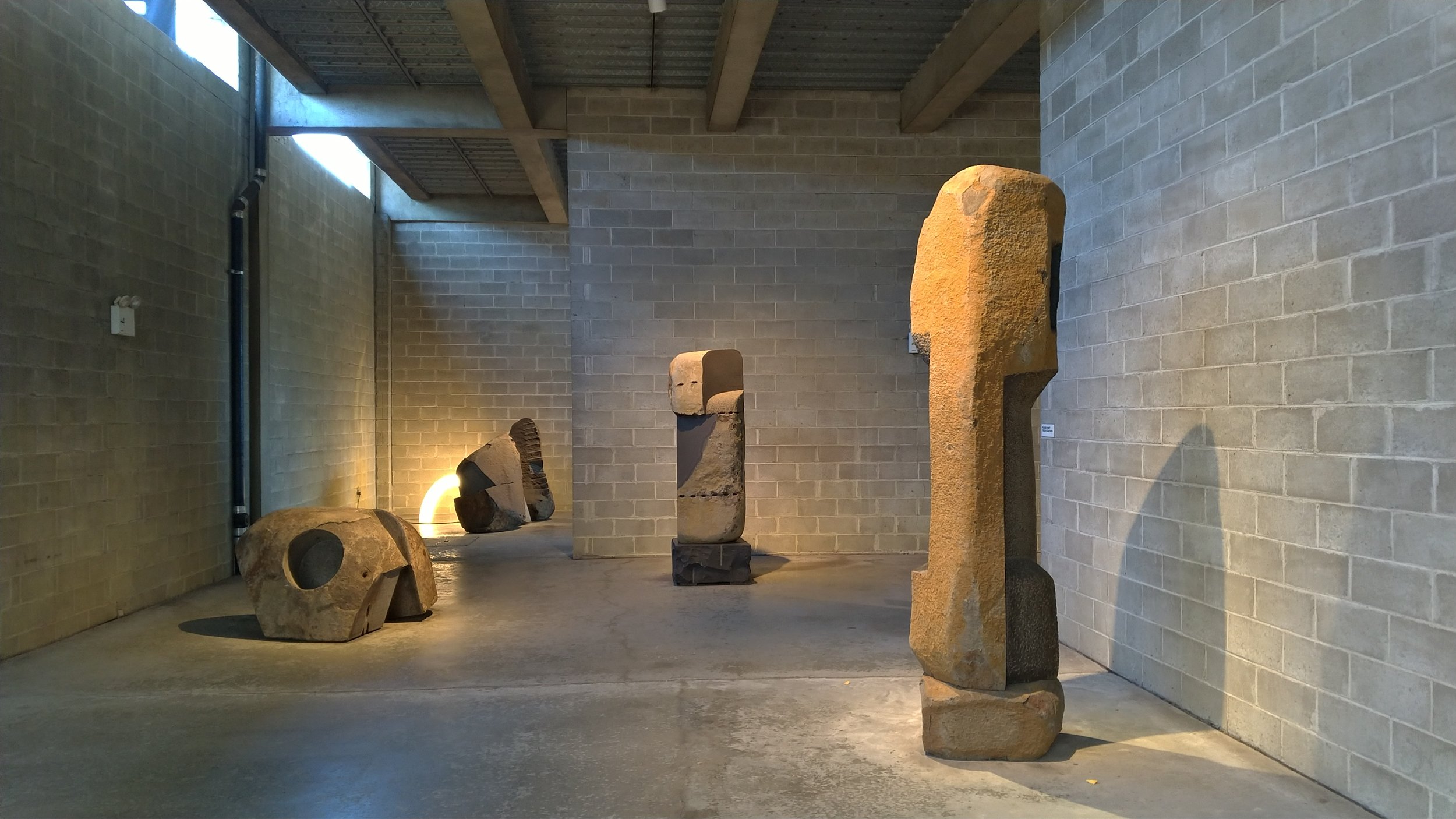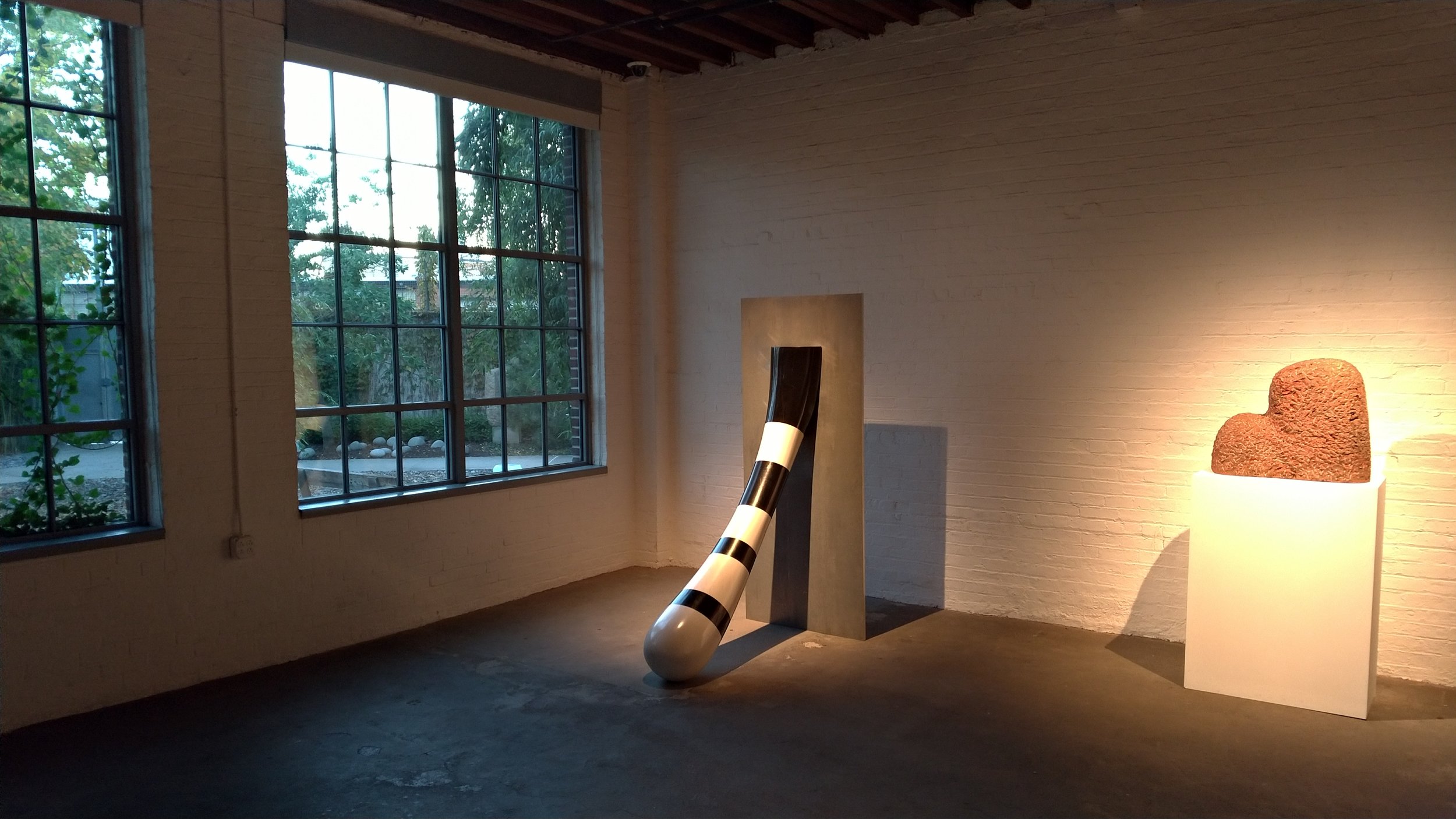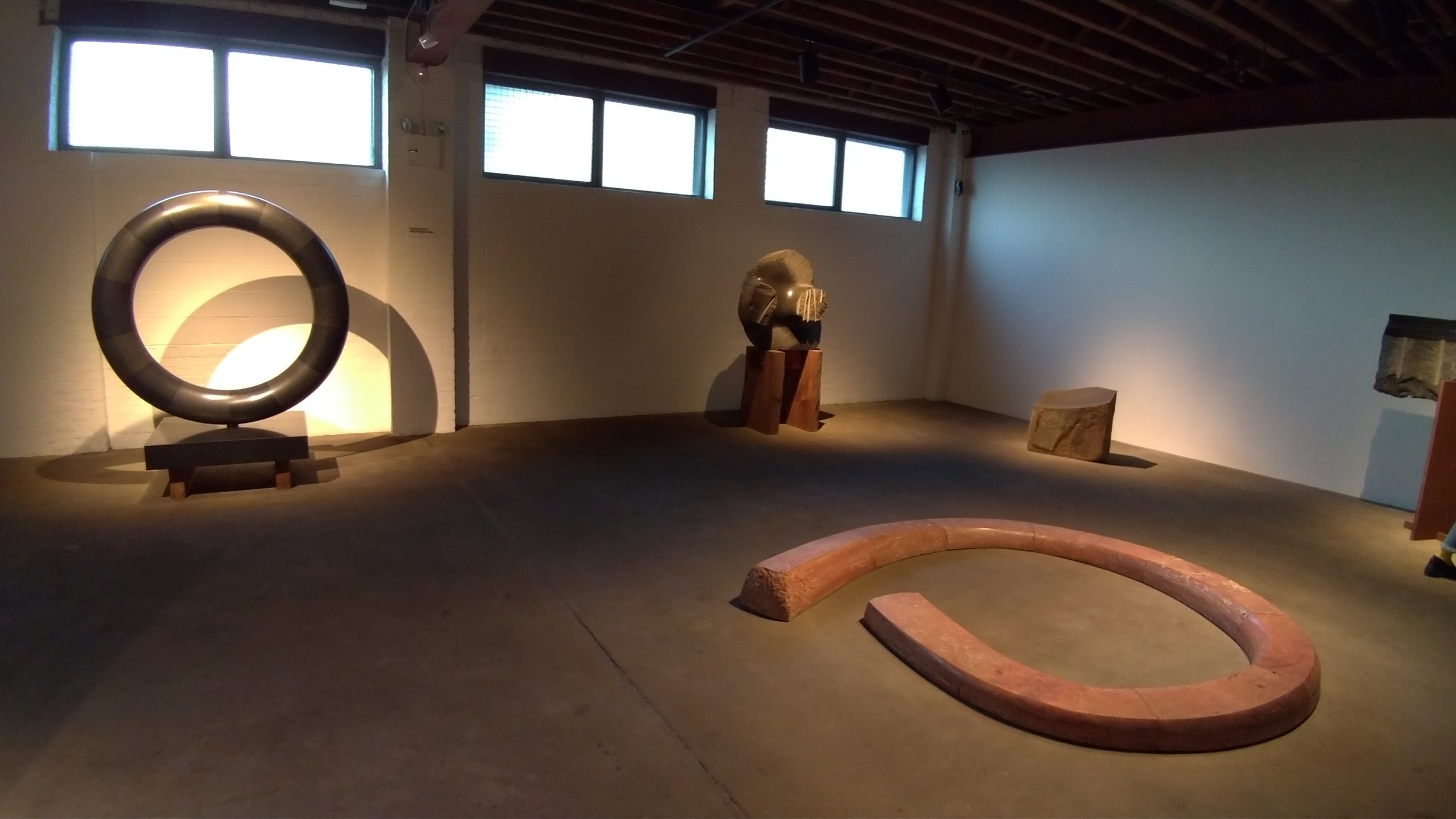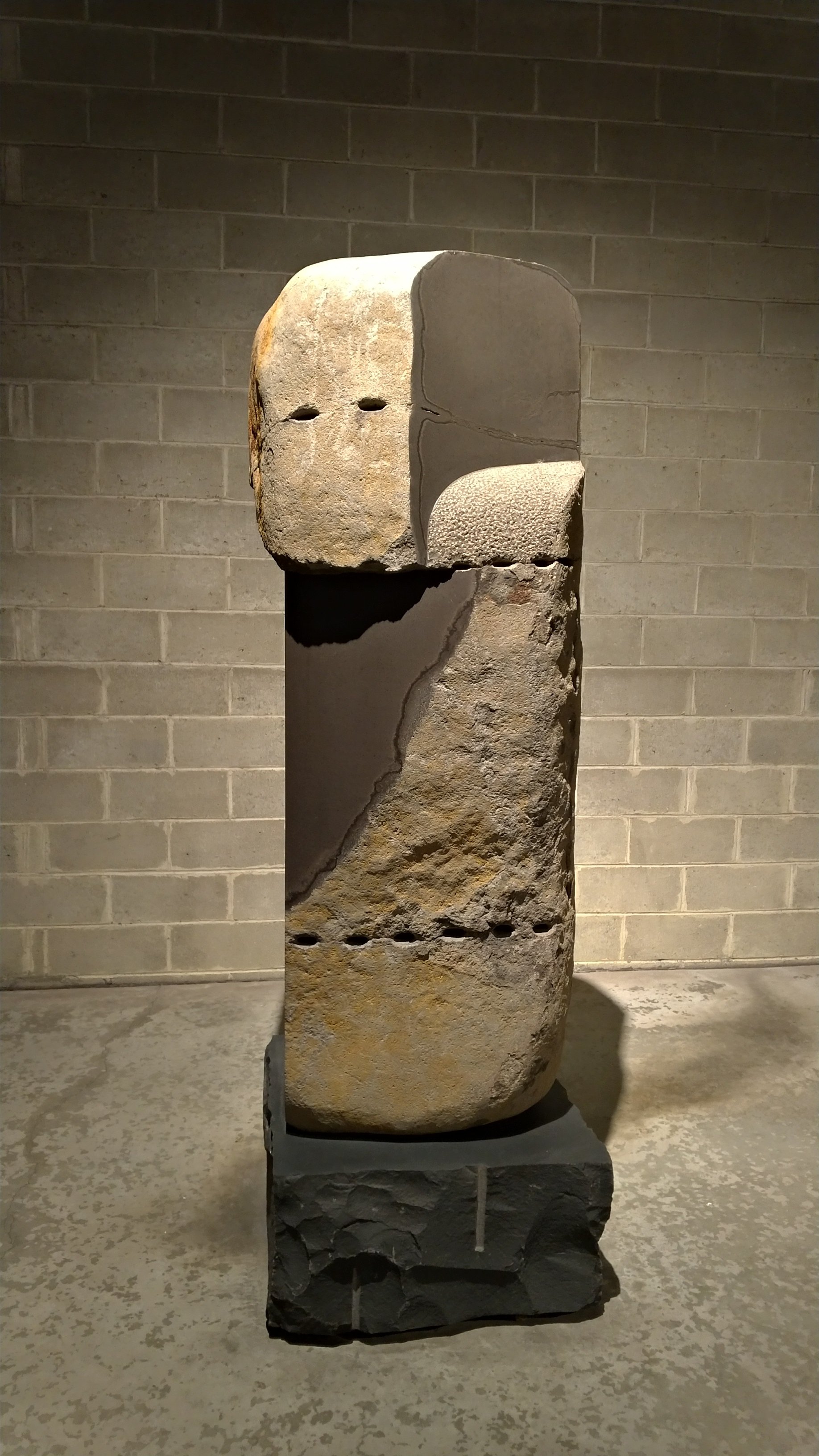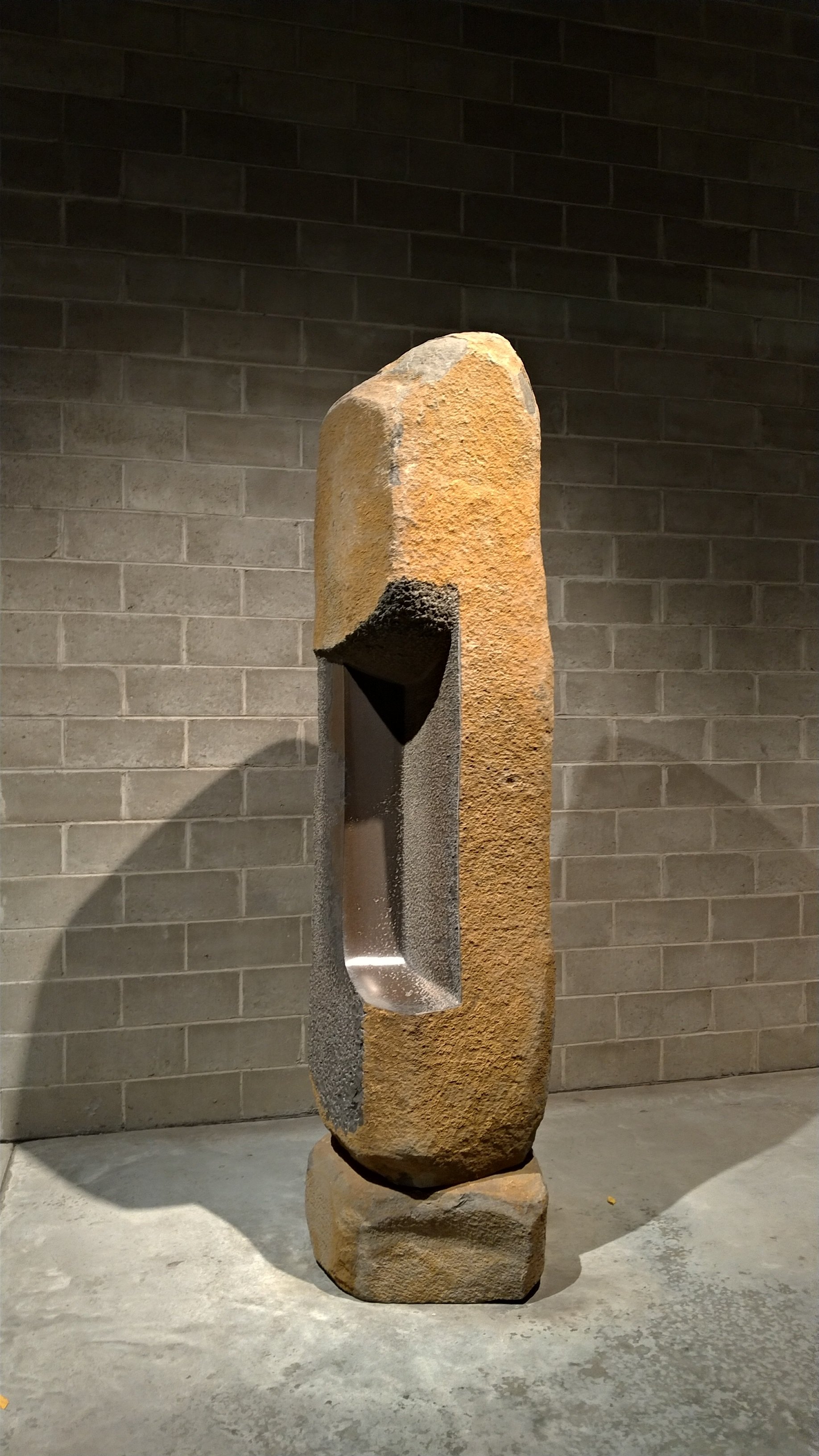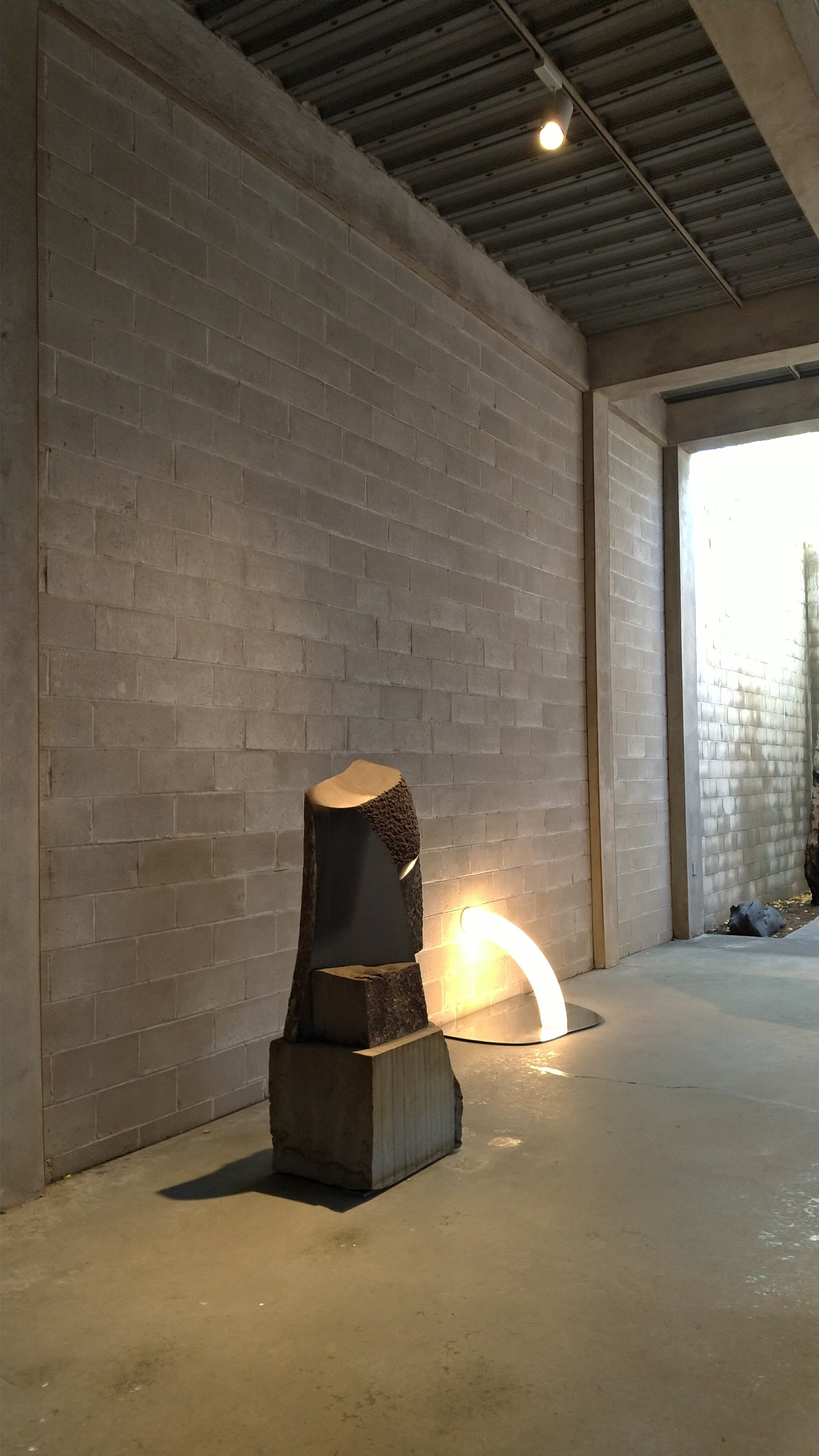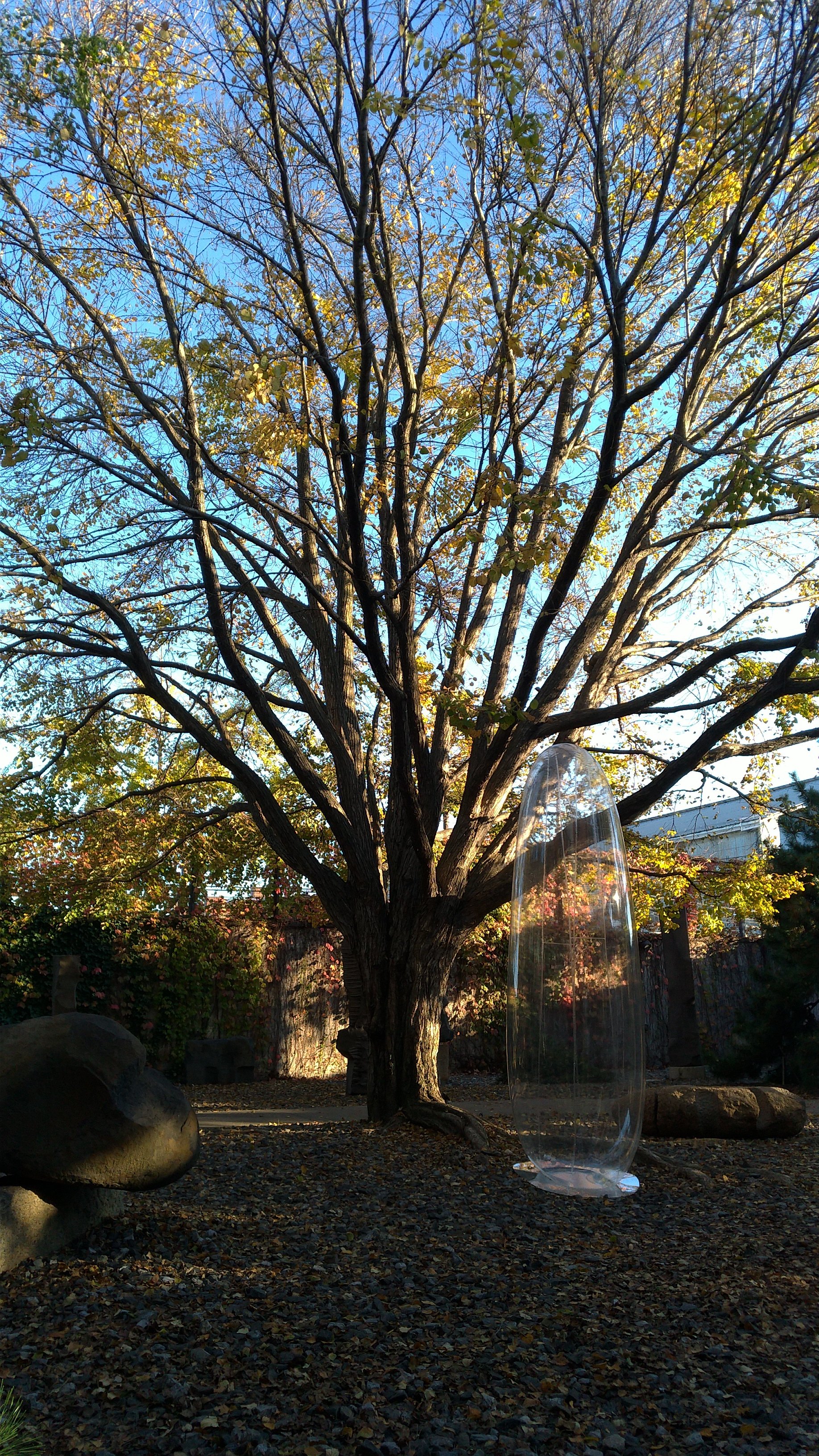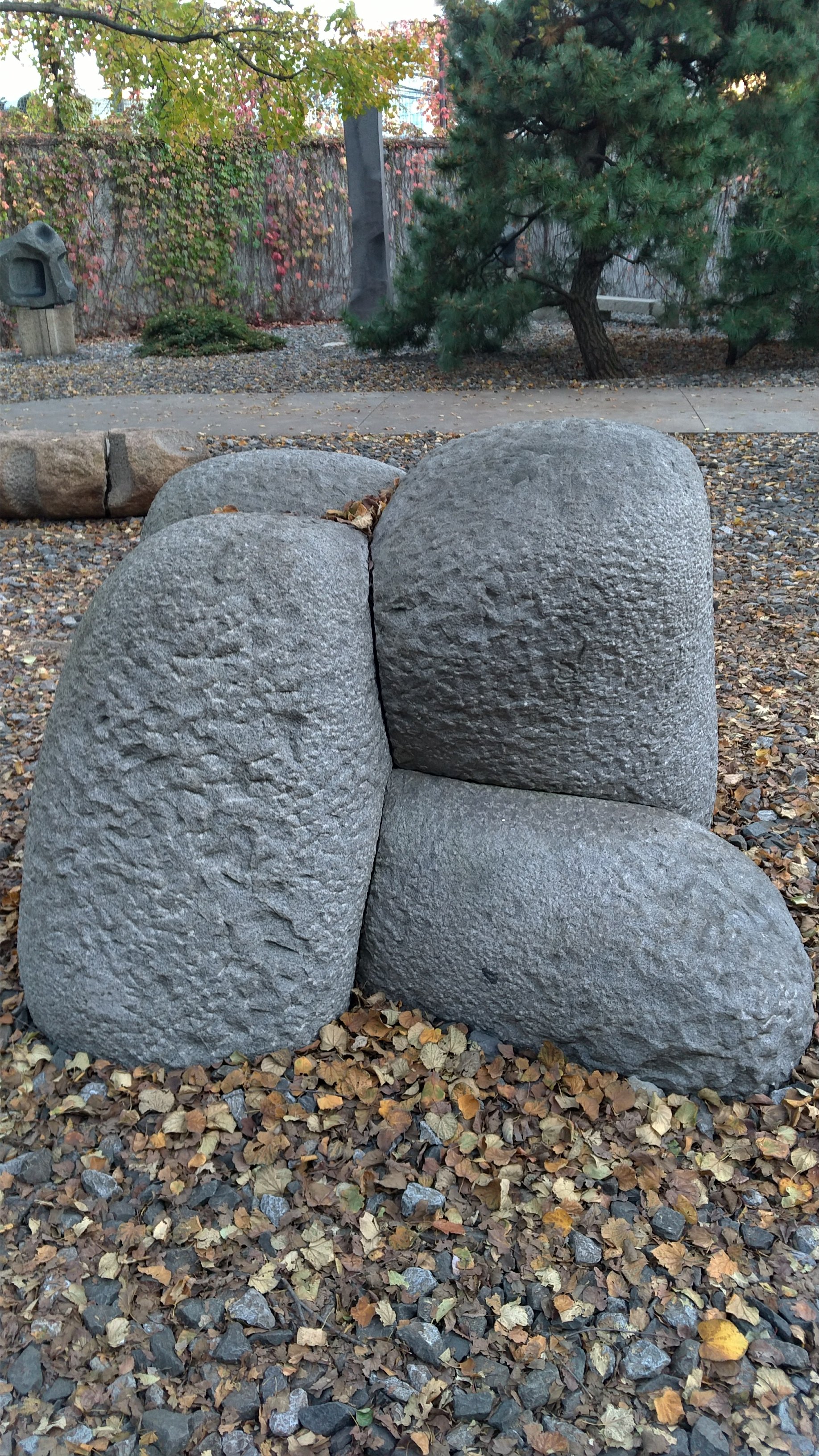Upon entering the Noguchi space, you soon realize that the museum has been conceived as a rhythmical, flowing “house” for the works to exist. Gliding through the barely divided galleries, you have the impression that you are in the sculptures’ private space, where they live and breathe. Nevertheless, you feel absolutely welcome –it’s as if the geometrical “creatures” have put on their Sunday best, polished the floors and turned on the most exquisite lighting in order to warmly welcome the visitor. Even though you have found yourself at their home, you too belong there!
The “unseen” host is Japanese-American Isamu Noguchi (1904-1988), one of the preeminent 20th century sculptors, whose activity spans a broad range of techniques and styles, extending, beyond sculpture, to architecture and design. The conversion of the former industrial Queens space into a museum-garden is his own creation. The Noguchi Museum, where everything seems so simple and natural, so harmonic, was inaugurated in 1985. And, of course, there’s nothing harder to achieve than “simple and natural”: it took the prolific internationalist artist eleven years to open his “house” to the public.
A strong current leads you lightly but firmly between the works, from one level to the other, as if invisible threads are keeping your body in motion, your senses alert and your soul uplifted. Don’t be fooled, though, into thinking that the world here is always soft. The same civilization that gave birth to ikebana and bonsai -the fragile arts exalting nature’s poetry and miniature art-, also gave birth to hara-kiri, where, with equal dexterity, you have to dryly thrust the dagger deep into your entrails.
As soon as you enter the museum, you find yourself in a high-ceilinged semi-enclosed cement ground-floor, reminiscent of something between a Greek apartment building piloti and a construction site. Rocky gray-brown volumes of indefinable shapes, bearing the signs of insertion (cuts, holes, curves, rills, “intrusions” of metal) stand scattered here and there, occasionally paired with arched luminous objects, while from the openings in the upper parts of the walls a slice of sky is visible. Outside, the birds are fluttering and tweeting so loud that I can’t tell if they are real or a sound installation. The smell from the concrete blocks and the cool of the rocks stimulate the senses and memory, creating a cleansing vestibule for the visitor. Particularly for those of us hailing from the Cyclades, the setting transfers you somewhere between a quarry and an ancient temple.
Catharsis and Aegean associations had actually started a little earlier for me, since I chose to travel from Manhattan to Queens by ferry. The trip may barely last ten minutes, yet the waves and the sea breeze (yes, East River is salty!) suffice to give your outing the taste of a real excursion -and to prepare you for ecstasy.
We learn that the light tubes accompanying the basaltic works in the “piloti” rooms, as well as several other objects strewn throughout the museum, are interventions by Eleni Petaloti and Leonidas Trampoukis of design studio Objects of Common Interest, active between New York and Greece. It’s worth noting that Noguchi maintained close ties with Greek culture and Greek people all his life.
In the following galleries, countless studies on material, shape, perspective, composition and juxtaposition unfold; and yet, in whichever work you devote your attention to, you encounter the power of geometry and of texture. And a strange wisdom. And often a sense of humor.
Deliciously smooth surfaces that you can barely resist caressing stand out, like “Magic Ring” (1970), a sectioned curve made of Persian travertine with reddish and cream-colored veins, coiled on the floor. Nearby, “Sun at Midnight” (1973), a black granite standing circle hypnotizes the visitor. The six-feet tall framework which I would describe as a “snaky window”, is actually titled “The Void” (1970), and is made of Portuguese Rose Aurora marble (the names of the materials are a parallel poem).
Rarely have I felt better “installed” than on the wooden bench of the garden, where I arrived without realizing how. At the center sits a majestic, noble tree, still holding some of its leaves (it’s November). The gravel under my feet, mixed with the fallen leaves, connects me not only to the overgrown tree roots but also to the stone “creatures” all around me.
A complex composed of four gray round-shaped rocks embracing each other emits a sense of security and reminds me again of the fatherland. (Here, though, the rocks are smaller than those in the world-renowned “moon landscape” of the Volax village in Tinos.) The eternal question arises: “Is it the Cycladic rocks that look like sculptures or is it the sculptures that imitate the Cycladic rocks?”
Headed toward the exit, I return to the concrete vestibule. Magic sunset hour is here, and the birds’ flutter is louder than ever. The light has changed (and perhaps so have I). Now it clearly seems as if the basaltic volumes have eyes looking at you! Like Michelangelo’s “Slaves”, the volumes seem ready to emerge from the stone, to take their full shape. Though stelae, they contain movement--like the entirety of this house of liquid limits.
This essay first appeared in Greek in the TA NEA newspaper (in print and online) on November 30, 2021.
It was reproduced by HellasJournal.com.
Το κείμενο αυτό πρωτοδημοσιεύτηκε στην εφημερίδα ΤΑ ΝΕΑ (έντυπη και ηλεκτρονική έκδοση) στις 30 Νοεμβρίου 2021.
Αναδημοσιεύτηκε από το HellasJournal.com.
Για να διαβάσετε το ελληνικό κείμενο, κάντε κλικ εδώ.
